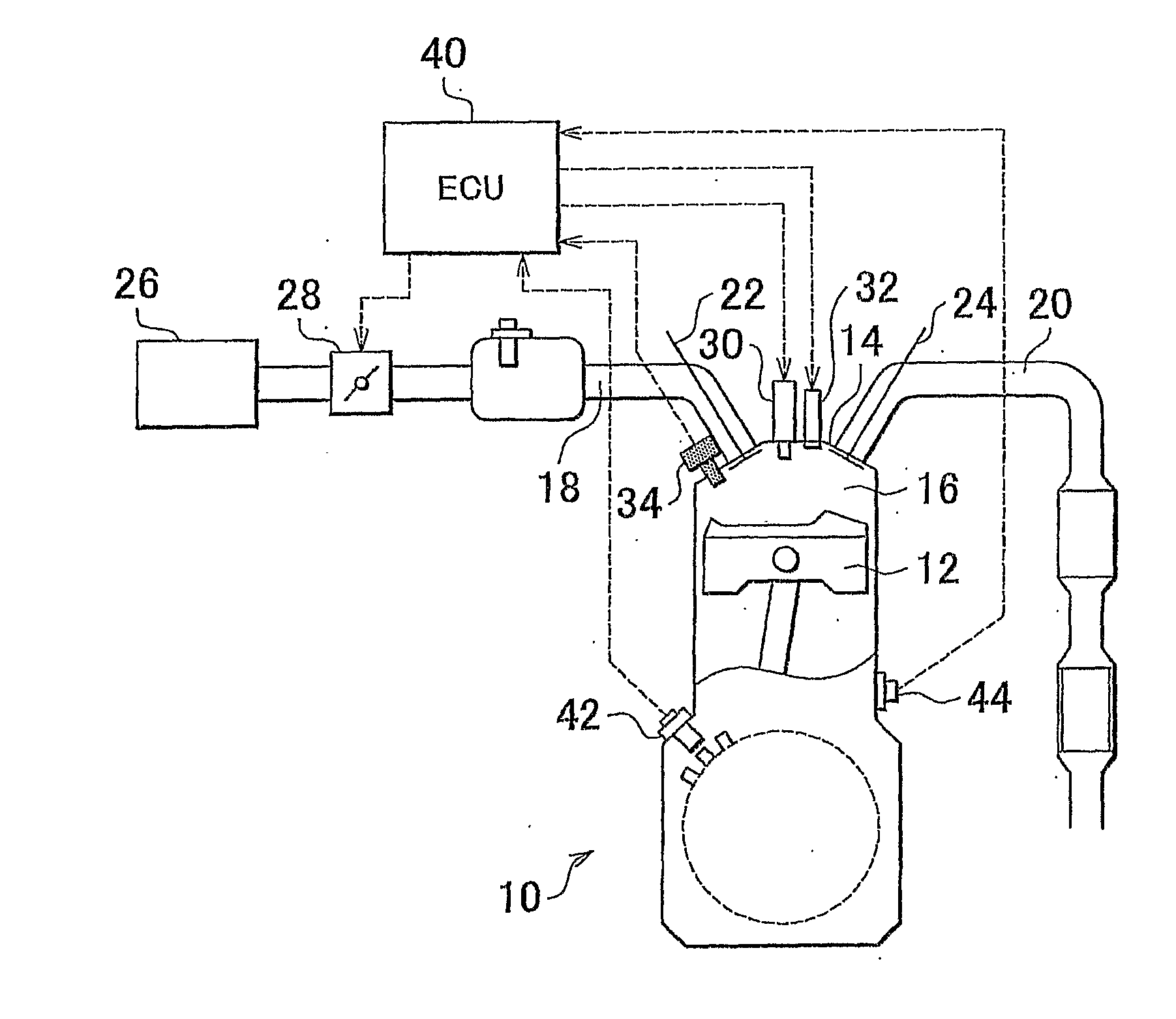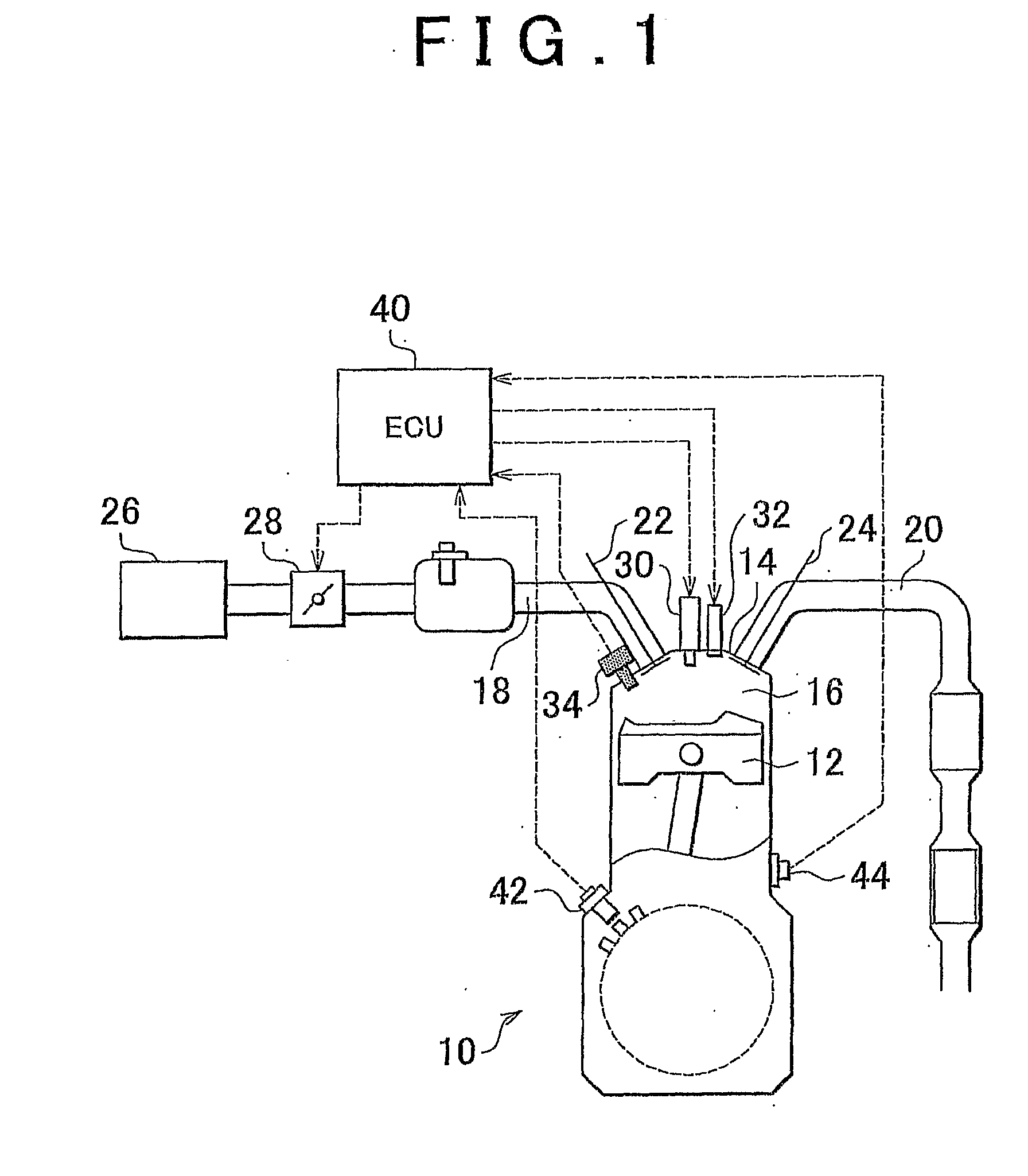Controller for and method of controlling internal combustion engine
a technology of internal combustion engine and controller, which is applied in the direction of electric control, machines/engines, instruments, etc., can solve the problems of complex sensor construction, thermal strain in constituent parts, and sensor output error, and achieve the effect of simple calculation
- Summary
- Abstract
- Description
- Claims
- Application Information
AI Technical Summary
Benefits of technology
Problems solved by technology
Method used
Image
Examples
first embodiment
Specific Process of First Embodiment
[0102]Next, referring to FIG. 7, a specific process of the first embodiment will be described. FIG. 7 is a flow chart showing a routine, by which the ECU 40 corrects the thermal strain error.
[0103]In the routine shown in FIG. 7, first, a cylinder pressure is acquired (step 100). Specifically, in this step, the cylinder pressure P(θ) at a crank angle θ is detected with the use of the cylinder pressure sensor 34. Subsequently, the value of PVκ(θ) is calculated (step 102). Specifically, in this step, the value of PVκ(θ) at the crank angle (θ) is calculated based on the cylinder pressure P(θ) acquired in step 100, the cylinder volume V(θ) at the time of detecting the cylinder pressure, and the specific heat ratio κ of the gas in the cylinder.
[0104]Next, the crank angle θfix, at which the value of PVκ(θ) peaks, is detected (step 104). Specifically, in this step, the crank angle θfix, at which the value of PVκ(θ) calculated in the above step 102 peaks, ...
second embodiment
Specific Process of Second Embodiment
[0124]Next, referring to FIG. 10, a specific process of the second embodiment will be described. FIG. 10 is a flow chart showing a routine, by which the ECU 40 corrects the thermal strain error.
[0125]In the routine shown in FIG. 10, it is determined whether the engine speed is lower than a predetermined value α (step 200). As the predetermined value α, a predetermined value is read in as the maximum engine speed, up to which the cooling loss of the internal combustion engine 10 can affect the calculation of PVκ. As a result, when it is determined that the relation, (engine speed)κ. Then, the process proceeds to the next step and the water temperature of the internal combustion engine 10 is detected (step 202).
[0126]Next, the cooling loss coefficient Kcool is read in from a map (step 204). FIG. 11 is a map for determining the cooling loss coefficient Kcool. In this step, the coefficient Kcool corresponding to the engine speed and the water tempera...
third embodiment
Specific Process of Third Embodiment
[0139]Next, referring to FIG. 13, a specific process of this embodiment will be described. FIG. 13 is a flow chart showing a routine, by which the ECU 40 corrects the thermal strain error.
[0140]In the routine shown in FIG. 13, first, a cylinder pressure P(θ) is acquired (step 300). Subsequently, the value of PVκ(θ) is calculated (step 302). Next, the crank angle θfix, at which the value of PVκ(θ) peaks, is detected (step 304). Specifically, in these steps, the processes similar to those of the above steps 100 to 104 are performed.
[0141]Next, a cooling loss coefficient Kw is read in from a map (step 306). Specifically, in this step, first, the engine speed and the water temperature of the internal combustion engine 10 are detected. Next, Kw is determined that corresponds to the detected engine speed and water temperature with the use of a multidimensional map in which the engine speed and the water temperature are parameters. With this map, the low...
PUM
 Login to View More
Login to View More Abstract
Description
Claims
Application Information
 Login to View More
Login to View More - R&D
- Intellectual Property
- Life Sciences
- Materials
- Tech Scout
- Unparalleled Data Quality
- Higher Quality Content
- 60% Fewer Hallucinations
Browse by: Latest US Patents, China's latest patents, Technical Efficacy Thesaurus, Application Domain, Technology Topic, Popular Technical Reports.
© 2025 PatSnap. All rights reserved.Legal|Privacy policy|Modern Slavery Act Transparency Statement|Sitemap|About US| Contact US: help@patsnap.com



